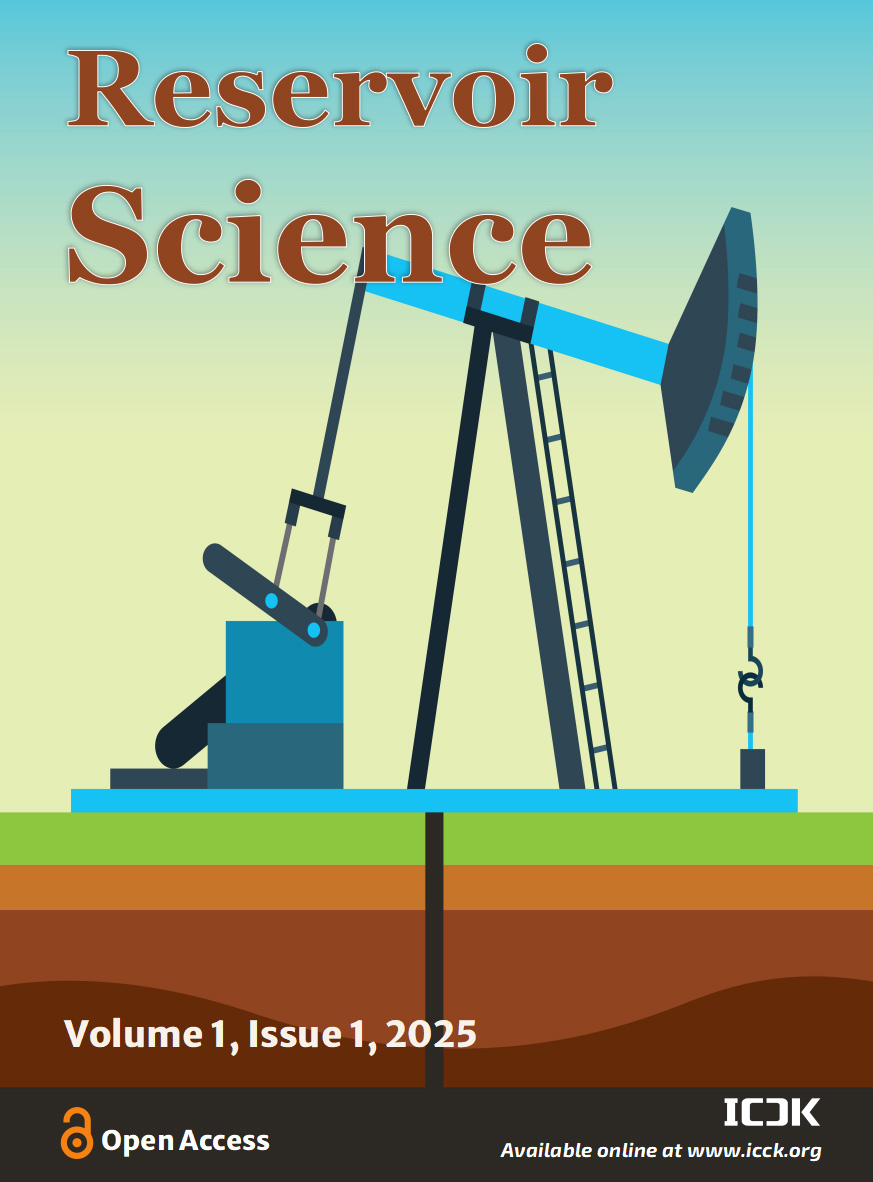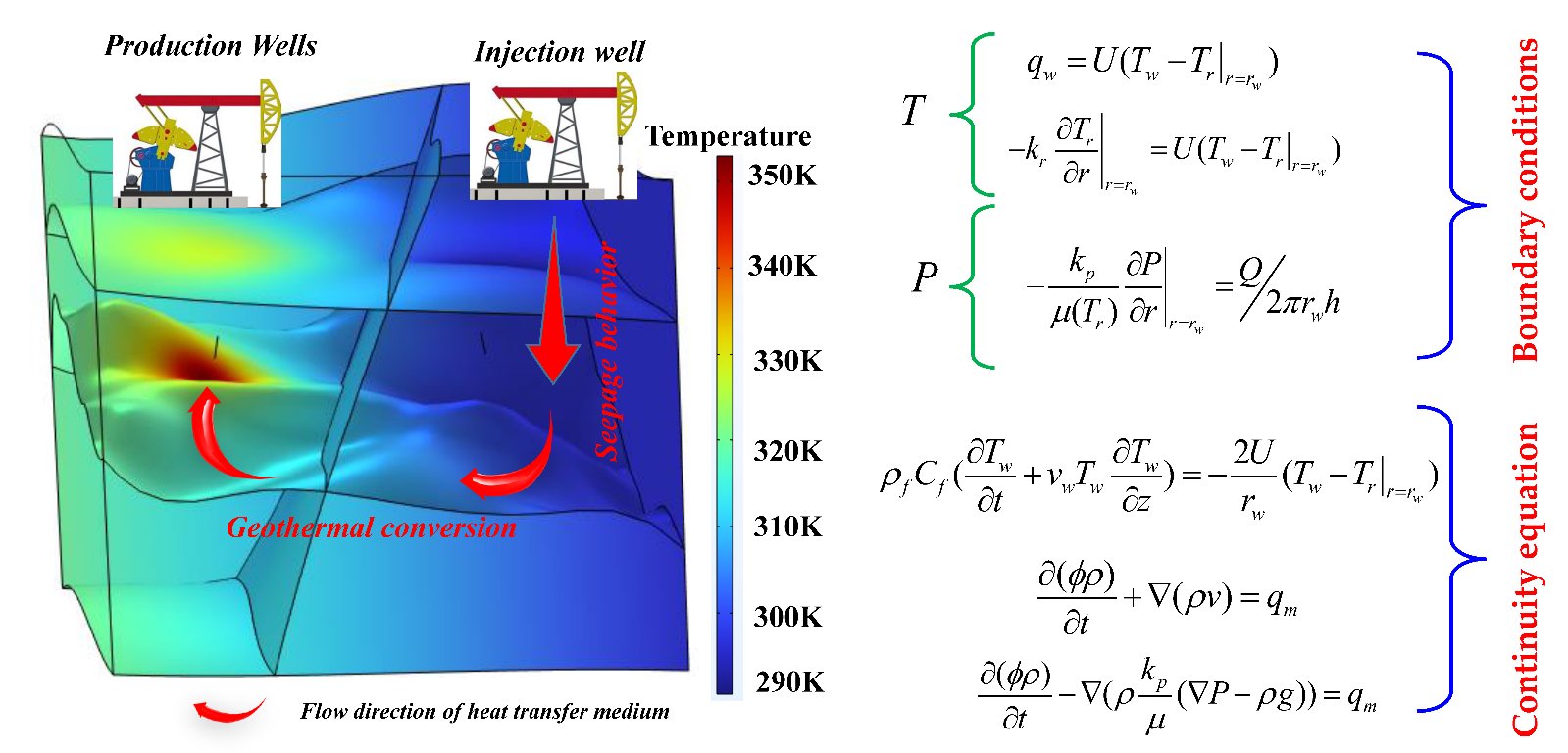Abstract
The geothermal resources present within the reservoir post-oil production in the oil field have hitherto been overlooked and underdeveloped, constituting a novel energy supplement for the maintenance of energy security. The present study constructed a geothermal transmission and exploitation model for oil reservoirs based on the geological environment and the characteristics of geothermal transmission media. This model can be used to analyse the impact of different factors on the efficiency of reservoir geothermal resources. Concurrently, a molecular dynamics model was constructed to reveal the geothermal transmission mechanism at a microscopic perspective, which will facilitate the optimisation of geothermal mining technology. The findings indicate that fluid viscosity hinders geothermal transmission, and the transmission medium of 40mPa·s increases the diameter range of geothermal transmission by 9m compared with 30mPa·s. Furthermore, the deflection angle of reservoir fractures is also not conducive to reservoir geothermal transmission. It has been demonstrated that an increase in the deflection angle results in a reduction of the transmission capacity, owing to substantial fluid filtration. The utilisation of reservoir geothermal resources provides fundamental data support for the rational application of energy and the assurance of energy security.
Keywords
geothermal transmission
reservoir energy extraction
fluid heat transfer
energy engineering
petroleum reservoir
Data Availability Statement
Data will be made available on request.
Funding
This work was supported by the "Tianchi Talents" Young Doctor Introduction Program Project.
Conflicts of Interest
The authors declare no conflicts of interest.
Ethical Approval and Consent to Participate
Not applicable.
Cite This Article
APA Style
Wang, F., & Kobina, F. (2025). The Influence of Geological Factors and Transmission Fluids on the Exploitation of Reservoir Geothermal Resources: Factor Discussion and Mechanism Analysis. Reservoir Science, 1(1), 3–18. https://doi.org/10.62762/RS.2025.637298
Publisher's Note
ICCK stays neutral with regard to jurisdictional claims in published maps and institutional affiliations.
Rights and Permissions

Copyright © 2025 by the Author(s). Published by Institute of Central Computation and Knowledge. This article is an open access article distributed under the terms and conditions of the Creative Commons Attribution (CC BY) license (
https://creativecommons.org/licenses/by/4.0/), which permits use, sharing, adaptation, distribution and reproduction in any medium or format, as long as you give appropriate credit to the original author(s) and the source, provide a link to the Creative Commons licence, and indicate if changes were made.


 Submit Manuscript
Edit a Special Issue
Submit Manuscript
Edit a Special Issue

 Copyright © 2025 by the Author(s). Published by Institute of Central Computation and Knowledge. This article is an open access article distributed under the terms and conditions of the Creative Commons Attribution (CC BY) license (https://creativecommons.org/licenses/by/4.0/), which permits use, sharing, adaptation, distribution and reproduction in any medium or format, as long as you give appropriate credit to the original author(s) and the source, provide a link to the Creative Commons licence, and indicate if changes were made.
Copyright © 2025 by the Author(s). Published by Institute of Central Computation and Knowledge. This article is an open access article distributed under the terms and conditions of the Creative Commons Attribution (CC BY) license (https://creativecommons.org/licenses/by/4.0/), which permits use, sharing, adaptation, distribution and reproduction in any medium or format, as long as you give appropriate credit to the original author(s) and the source, provide a link to the Creative Commons licence, and indicate if changes were made. 